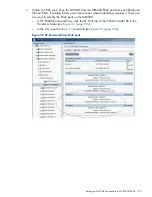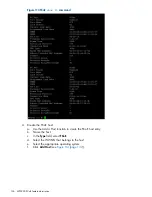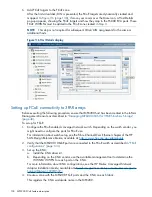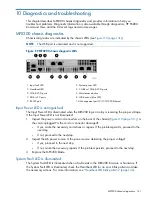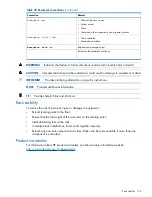
Fibre Channel Port LEDs
•
The top LED (2 Gb/s) indicates activity (data) is passing through the port at 2 Gb/s speed.
•
The middle LED (4 Gb/s) indicates activity (data) is passing through the port at 4 Gb/s speed.
•
The bottom LED (8 Gb/s) indicates activity (data) is passing through the port at 8 Gb/s speed.
•
When all three LEDs are blinking, the port is not operational.
POST diagnostics
The MPX200 performs a series of tests as part of its power-on procedure. The POST diagnostic
program performs the following tests:
•
Memory
•
Flash validation
•
PCI device discovery
•
Management Ethernet port
Heartbeat LED blink patterns
The Heartbeat LED indicates the operational status of the MPX200. When the POST completes
with no errors, the Heartbeat LED blinks at a steady rate of once per second. When the MPX200
is in maintenance mode, the Heartbeat LED blinks continuously. The blink patterns that indicate
critical errors are described in the following sections. In addition to producing a Heartbeat LED
blink pattern, a critical error also illuminates the System Fault LED. The Heartbeat LED shows a
blink pattern for the following conditions:
•
1 blink—Normal operation
•
2 blinks—Not used
•
3 blinks—System error
•
4 blinks—Management port IP address conflict
•
5 blinks—Over temperature
Normal blink pattern
A blink pattern of one second ON followed by one second OFF indicates that the MPX200 is
operating normally (
Figure 120 (page 142)
).
Figure 120 Normal blink pattern
System error blink pattern
A system error is indicated by a three-blink pattern (
Figure 121 (page 142)
).
Figure 121 System error blink pattern
Management port IP address conflict blink pattern
An IP address conflict on the management port is indicated by a four-blink pattern (
Figure 122 (page
143)
).
142
Diagnostics and troubleshooting








